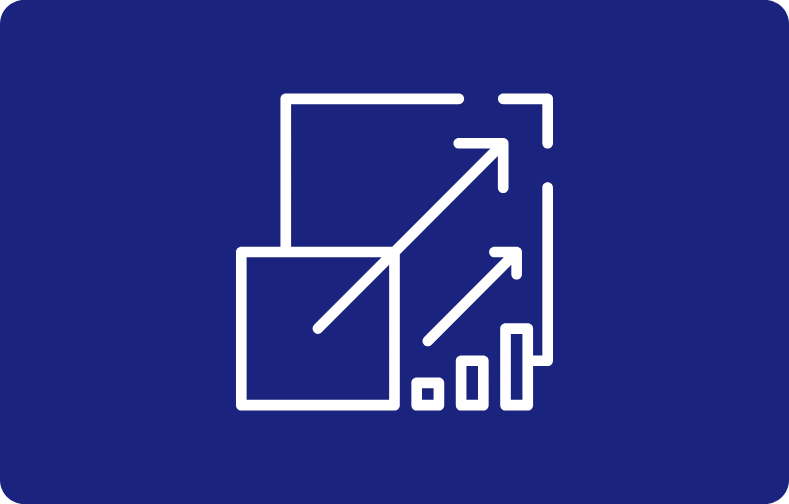Postgres vs. MySQL

-
- The Vital Functions and Potency of Databases
- WordPress Databases
- MySQL
- Features of MySQL
- Use Cases
- OLTP Transactions
- LAMP Open-Source Stack
- E-commerce Applications
- PostgreSQL
- Features of PostgreSQL
- Use Cases
- MySQL vs. PostgreSQL
- Key differences: PostgreSQL vs MySQL
- How to choose between PostgreSQL and MySQL
- Summary of Differences: PostgreSQL vs MySQL
- Improving Your PostgreSQL and MySQL Requirements with AWS Support
The Vital Functions and Potency of Databases
Data is a comprehensive collection of observations and information. The increasing interconnectedness made possible by the internet has led developers to realize that efficient data management is necessary. Data is used for many things in today's corporate environment, from risk mitigation to assessing the suitability of possible new clients. The rising demand for data worldwide has highlighted the need for solid and adaptable databases to manage this significant amount of data effectively. This article compares PostgreSQL and MySQL, the two most often used open-source databases for WordPress. First, let's examine the components that make up WordPress databases in more depth.
WordPress Databases
Many businesses choose WordPress as their website hosting platform.
Furthermore, a sizable percentage of all implemented content management systems are powered by WordPress. It's a great option because of its intuitive UI, especially for new users. Although prior coding experience is not required to use WordPress, it might be helpful to grasp its various components, including databases.
Your website will only function if your WordPress database is included. The database system is the foundation, ensuring every detail is meticulously maintained, from blog postings to user comments and modifications. The website must load and run without any issues.
The characteristics of an ideal database include scalability, cost-effectiveness, and adaptability. Thankfully, several open-source databases are available to support data administration using the WordPress platform.
We'll focus on MySQL and PostgreSQL in this article.
MySQL
The most widely used relational database management system globally is MySQL. This open-source relational database management system has been rated the second-highest approval rate by developers in 2024. It is well known for providing enterprises with scalable, secure, trustworthy, and effective data management.

Features of MySQL
Strong Data Security
MySQL is well known for its strong data security capabilities, providing a variety of choices for encrypted access control. This reinforces the general integrity and confidentiality of databases by guaranteeing that critical information is shielded from unwanted access. MySQL's encryption techniques protect data while it's in use, in transit, and at rest, making the platform more resilient to security breaches.
Variety of Data Type Support
Though there are some areas where PostgreSQL excels, MySQL is still a powerful database that supports a wide range of advanced data types, including character, date/time, numeric, JSON, boolean, and enumerated, which increases its flexibility.
Versatile Index Support
MySQL stands out for its wide range of index functionality, which includes hash, R-tree, B-tree, and inverted indexes. Because of its adaptability, which facilitates effective data retrieval and improves query speed, MySQL is a strong option in situations requiring different indexing algorithms catered to certain data structures and access patterns.
High Volume Transaction Handling
MySQL has strong transaction management and is capable of handling large numbers of read/write transactions. It is a good choice for applications that require high-performance transactional processing and concurrent access to data because of its adeptness in managing transactions, which guarantees data integrity, dependability, and concurrency control.
Access to Broad Support
Customers have a wide range of support resources, such as a vibrant community and possibilities for third-party vendors to provide them with paid assistance.
Open-Source Advantage
MySQL's tremendous acceptance may be attributed to its free availability as an open-source project.
Upheld by Oracle
Under Oracle's ownership, MySQL is continuously maintained and improved with new features, plugins, and extensions. Consumers gain from thorough customer support, which raises the platform's dependability even further. Oracle's devotion to meet changing user demands and preserving MySQL's standing as a reliable and feature-rich relational database management system is further demonstrated by this commitment to innovation and support.
Community Support
A committed group of volunteers offers helpful troubleshooting support.
Use Cases
Web applications make considerable use of the MySQL database, which is a vital database for most servers. MySQL is preferred by non-WordPress companies like Joomla, TYPO3, and Drupal, where it serves as their central database, in addition to its use as a database for WordPress.
Here are some examples of how dependable and effective MySQL is as a database system:
OLTP Transactions
MySQL handles Online Transaction Processing (OLTP) transactions well, providing accuracy and speed. Processing hundreds of requests per second is within its efficient scaling capabilities. MySQL has good support for crucial transactions requiring the concepts of Atomicity, Consistency, Isolation, and Durability (ACID). MySQL's easy rollback ensures data integrity to a checkpoint in the case of a system failure during a transaction.
LAMP Open-Source Stack
The LAMP open-source software stack (Linux, Apache, MySQL, and PHP/Python/Perl) is used by applications in which MySQL is essential. This stack is extensively used for web services because of its reputation for supporting dynamic web pages and high-performance online applications.
E-commerce Applications
In E-Commerce applications, MySQL is a popular option for transactional operations. Its strengths are evident in how it handles product catalogs, processes transactions, and manages client data. Regarding e-commerce solutions, MySQL is frequently used with non-relational databases, such as document and key-value stores, to make order data synchronization and non-product-related information storage easier.
PostgreSQL
PostgreSQL stands out among open-source Object-Relational Database Management Systems (ORDBMS) because it has been constantly developed for over 30 years. A broad feature set and "catalogue-driven" operation set PostgreSQL apart from other database management systems.
Because of its inherent flexibility, PostgreSQL is the ideal choice for high-volume, sophisticated data processing that MySQL might not be able to handle. PostgreSQL's customizability is substantially increased by allowing it to create data types, index types, and functional languages and store information about tables and columns.
PostgreSQL won the Database of the Year Award in 2020 as the fastest-growing DBMS.

Features of PostgreSQL
Object-Relational Database Management System (ORDBMS)
These systems are perfect for managing complicated and structured data types because they combine relational and object-oriented characteristics.
Customization Capabilities
Compared to other database systems, PostgreSQL has more features and capabilities since it supports user-defined functions and stored procedures. Its substantial modification flexibility allows for the creation of plugins customized to meet specific needs.
Diverse Data Types
PostgreSQL can handle many data kinds, such as dates, numbers, texts, timestamps, and binary objects.
Scalability
PostgreSQL's smooth scalability makes it a preferred choice for corporate applications and websites. Because of the ease with which its design can handle increasing workloads, it is a dependable option for enterprises in need of a database system that can adapt to meet changing needs and performance specifications.
ACID-Compliant
PostgreSQL complies with ACID standards, allowing for highly parallel operations and supporting NoSQL, a capability that MySQL started implementing with Version 8.0.
Open Source
Under a permissive license that lets users use, alter, and distribute the DBMS as needed, PostgreSQL is publicly accessible and open-source software.
Frequent Updates
August 2024 saw the release of Version 15.4, the most recent stable upgrade.
Community Support
Through the PostgreSQL Global Development Group, a committed group of developers and volunteers maintain and update the PostgreSQL system, giving the database a sizable and vibrant support community. There is also access to private third-party support services.
Use Cases
PostgreSQL, which is just behind MySQL in the top five most used databases, has gained widespread usage. Prominent enterprises such as Bloomberg, Goldman Sachs, and Nokia rely on PostgreSQL as their backend database system.
PostgreSQL may be utilized in a variety of industries and fields because of its immense versatility. Here are a few instances of contemporary PostgreSQL applications.
Government GIS Data
One powerful extension for PostgreSQL is "PostGIS," which processes different geometric shapes, such as line strings and points. PostGIS is optimized to reduce memory and disk footprint, which improves query performance. This is extremely helpful for government applications, especially in emergency services, water infrastructure, and power, where GIS is essential for staff navigation and locating under challenging situations.
Manufacturing
PostgreSQL is an excellent option for the industrial sector since effective data storage is essential. It works well for maximizing the effectiveness of the supply chain and storage. PostgreSQL is preferred because of its practically zero-downtime upgrades, complete redundancy, configurable automatic failover, and ACID compliance.
Web Technology
PostgreSQL is more valuable as a NoSQL-style data storage than a purely relational database. Thanks to this special feature, users can easily move between the relational and document-oriented domains inside a single product. Replication makes PostgreSQL compatible with many current frameworks, including Django (Python), Hibernate (Java), Ruby on Rails, and PHP. This allows websites to scale easily by adding new database servers as needed.
Scientific Data
PostgreSQL is a powerful SQL engine that performs exceptionally well in research and scientific initiatives that produce large amounts of data. The database's useful extendibility and ability to efficiently handle big datasets are highlighted. PostgreSQL's usefulness is improved by integration with programs like MATLAB and R, which allow certain mathematical and aggregation operations to be performed.
MySQL vs. PostgreSQL
MySQL is a relational database management system that helps organize data into tables. Numerous dynamic websites, embedded technologies, and online applications rely on it as their base. But compared to MySQL, PostgreSQL has more features. It provides improved parallelism, scalability, and data format flexibility.
Similarities between PostgreSQL and MySQL
Relational database management systems, such as PostgreSQL and MySQL, use tables to store data related by common column values. Below is an example of this table data relationship arrangement:
-
A university keeps track of student data in a table called Students that includes columns for student_name, student_ID, and student_address.
-
They further oversee course-related data in a Courses table, which consists of columns like course_name and course_id.
-
To record information about every student enrolled in different courses, the Student_Data database has columns for student_id and course_id.
-
Both use SQL, or structured query language, to access and alter data.
-
Developer communities provide strong support for both open-source systems.
-
They both include built-in features for access control, data replication, and backup.
Key differences: PostgreSQL vs MySQL
ACID compliance
Database integrity is protected against unanticipated mistakes by ACID, which stands for Atomicity, Consistency, Isolation, and Durability. When combined with Network Database Cluster or InnoDB, MySQL guarantees ACID compliance; in contrast, PostgreSQL guarantees full ACID compliance in all configurations.




Concurrency Control
Through the creation of duplicate records, Multiversion Concurrency Control (MVCC) allows for the safe simultaneous reading and updating of shared data. This sophisticated database functionality allows multiple users to see and edit the same data concurrently without compromising data integrity. Notably, PostgreSQL allows MVCC to be supported, but MySQL does not.




Indexes
By differentially structuring commonly requested data, indexes let databases retrieve data more quickly. Though PostgreSQL provides a broader range of options, such as hash indexes, trees, expression indexes, and partial indexes, MySQL streamlines B-tree and R-tree indexing for hierarchical data and allows for more accurate database performance modifications as it grows.


Data Types
PostgreSQL describes itself as an object relational database, while MySQL only operates as a relational database. PostgreSQL allows data to be saved as objects with associated properties, removing the need for traditional relational structures when storing data. Programming languages like Java and .NET extensively use objects as a data type, making it easier to implement concepts like inheritance and parent-child relationships.
Database developers may have a better user-friendly experience using PostgreSQL. PostgreSQL also adds support for several other data formats, such as arrays and XML.


Views
A view is a portion of relevant data the database system has created from several tables. MySQL supports views. However, PostgreSQL offers more advanced view capabilities. Especially for complicated queries, such as computing the total orders during a given timeframe, materialized views in PostgreSQL may precompute particular variables in advance, improving database speed.


Stored Procedures
A database's repetitive maintenance activities can be streamlined by creating and saving stored procedures, which are collections of pre-defined SQL code statements or queries. While both PostgreSQL and MySQL offer stored procedures, PostgreSQL excels at running stored procedures.
For example, in a certain case, we wish to figure out the total compensation of all employees whose pay exceeds a particular cap. To do this, we'll write a stored procedure in PostgreSQL, highlighting the database management system's capability to run processes in scripting languages outside SQL.


Triggers
A trigger is simply an automated stored procedure triggered by specific events in a database management system. MySQL enables the automation of procedures before or after changes to user data by allowing BEFORE and AFTER triggers connected to SQL INSERT, UPDATE, and DELETE statements. Conversely, PostgreSQL allows users to utilize functions to carry out intricate SQL searches by introducing the INSTEAD OF trigger.


How to choose between PostgreSQL and MySQL
Consider the following aspects before making a final selection:
Application Scope
Enterprise applications with a high volume of write operations and complex query structures are better suited for PostgreSQL. However, if you want to launch a prototype, create internal apps for a small user base, or create a data storage engine with a high read rate with a few changes, then going with a MySQL project makes sense.
Database development experience
MySQL is more user-friendly for beginners, with a lower learning curve and less time needed to start a new database project. It's simple to set up MySQL alone or in conjunction with other web development technologies like the LAMP stack.
On the other hand, PostgreSQL is often more difficult for beginners in the sector. It frequently requires complex infrastructure configuration and specialized troubleshooting knowledge.
Performance requirements
MySQL's enhanced read speed makes it ideal for situations where applications are primarily used for data reading. Conversely, because of its strong support for concurrent access and complicated transactions, PostgreSQL excels in situations that demand rapid data changes. Development teams may customize their database option to meet the individual requirements of their applications by selecting between PostgreSQL and MySQL based on the particular workload factors.
Write Performance
When several people modify a table at once, MySQL's usage of write locks may result in delays. Because PostgreSQL has built-in MVCC support, it performs very well when several write operations co-occur.
Read Performance
PostgreSQL requires a large amount of RAM for each connected user, making it resource-intensive for many users. On the other hand, for applications that are primarily concerned with reading and presenting data, MySQL's single-process strategy works better than PostgreSQL.
Summary of Differences: PostgreSQL vs MySQL
Category
PostgreSQL
MySQL
Data Type
All of the data types available in MySQL are supported by PostgreSQL, along with new ones, including geometric, enumerated, network address, arrays, ranges, XML, and composite.
MySQL can handle various data formats, including JSON, character, date/time, geographic, and numeric.
ACID Compliance
PostgreSQL always remains compatible with ACID standards.
MySQL only strictly complies with ACID standards when using the NDB Cluster and InnoDB storage engines.
Indexes
Besides tree indexes, PostgreSQL provides expression, partial, and hash indexes, among other index types.
MySQL makes it easier to employ the R-tree and B-tree indexing techniques.
Triggers
Advanced database capabilities like materialized views INSTEAD OF triggers and stored procedures in many languages are all supported to a great extent by PostgreSQL.
MySQL does not fully support database functionality like views, triggers, and procedures.
Concurrency Control
PostgreSQL uses MVCC to allow multiple users to safely read and update the same data simultaneously.
Multiversion Concurrency Control is not supported by MySQL (MVCC)
Stored Procedures
PostgreSQL offers further versatility by enabling the execution of stored procedures in languages other than SQL.
MySQL only supports SQL stored procedures.
Improving Your PostgreSQL and MySQL Requirements with AWS Support
Amazon Web Services (AWS) offers a range of services for all of your PostgreSQL and MySQL needs.
Amazon RDS
A group of managed services called Amazon Relational Database Service (Amazon RDS) is intended to make setting up, running, and growing relational databases in the cloud easier. Scalable MySQL servers with affordable and modifiable hardware capacity may be quickly deployed using Amazon RDS for MySQL. Comparably, PostgreSQL deployment administration is made easier with Amazon RDS for PostgreSQL, which handles disaster recovery backups, software updates, and storage management. The benefits of using Amazon RDS include quickly deploying scalable MySQL and PostgreSQL configurations, repurposing pre-existing database-related code, apps, and tools, and tracking critical operational metrics like compute memory and storage capacity use.
Amazon Aurora
Amazon Aurora is a cloud-native relational database management system that offers full compatibility with both MySQL and PostgreSQL. The speed and accessibility of premium commercial databases are seamlessly combined with the cost and user-friendliness of open-source databases.
Amazon EC2
With a variety of more than 500 instances, Amazon Elastic Computational Cloud (Amazon EC2) offers a vast and comprehensive computational platform. It provides the newest choices for operating systems, networking, storage, and CPUs. You may even customize models to meet the demands of your workflow.
You may run your PostgreSQL and MySQL databases in the cloud using Amazon EC2. However, this method necessitates doing database management activities by hand, such as scalability, patching, backups, infrastructure provisioning, and database setup and tuning.










